Utilizing Adenovirus Knob Proteins as Carriers in Cancer Gene Therapy Amidst the Presence of Anti-Knob Antibodies
- PMID: 39409008
- PMCID: PMC11476472
- DOI: 10.3390/ijms251910679
Utilizing Adenovirus Knob Proteins as Carriers in Cancer Gene Therapy Amidst the Presence of Anti-Knob Antibodies
Abstract
Numerous gene therapy drugs for cancer have received global approval, yet their efficacy against solid tumors remains inadequate. Our previous research indicated that the fiber protein, a component of the adenovirus capsid, can propagate from infected cells to neighboring cells that express the adenovirus receptor. We hypothesize that merging this fiber protein with an anti-cancer protein could enable the anti-cancer protein to disseminate around the transfected cells, presenting a novel approach to cancer gene therapy. In our study, we discovered that the knob region of the adenovirus type 5 fiber protein is the smallest unit capable of spreading to adjacent cells in a receptor-specific manner. We also showed that the recombinant knob protein infiltrates cells after dispersing to surrounding cells. To assess the potential of the knob protein to augment gene therapy for solid tumors in mice, we expressed a fusion gene of the A subunit of cytotoxic cholera toxin and the knob region in mouse tumors. We found that this fusion protein only inhibited tumor growth in receptor-expressing mouse melanomas, and this inhibitory effect persisted even in mice with anti-knob antibodies. Our study's findings propose a novel cancer gene therapy strategy that enhances therapeutic effects by specifically delivering therapeutic proteins, expressed from in vivo administered genes, to target molecules. This outcome offers a fresh perspective on gene therapy for solid cancers, and we anticipate that knob proteins will serve as a platform for this method.
Keywords: cancer; gene therapy; knob protein; neutralizing antibodies; targeting.
Conflict of interest statement
The authors declare that there are no conflicts of interest.
Figures
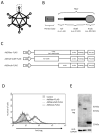
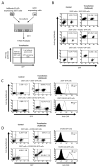
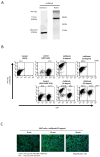
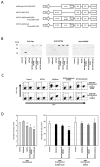
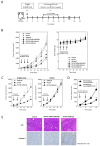
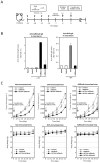
Similar articles
-
Fiber-mutant technique can augment gene transduction efficacy and anti-tumor effects against established murine melanoma by cytokine-gene therapy using adenovirus vectors.Cancer Lett. 2002 Mar 8;177(1):57-63. doi: 10.1016/s0304-3835(01)00768-6. Cancer Lett. 2002. PMID: 11809531
-
Generation of fiber-modified adenovirus vectors containing heterologous peptides in both the HI loop and C terminus of the fiber knob.J Gene Med. 2003 Apr;5(4):267-76. doi: 10.1002/jgm.348. J Gene Med. 2003. PMID: 12692861
-
Changing the adenovirus fiber for retaining gene delivery efficacy in the presence of neutralizing antibodies.Gene Ther. 2008 Jun;15(12):921-9. doi: 10.1038/gt.2008.56. Epub 2008 Apr 10. Gene Ther. 2008. PMID: 18401431
-
Transductional targeting of adenoviral cancer gene therapy.Curr Gene Ther. 2004 Sep;4(3):337-46. doi: 10.2174/1566523043346372. Curr Gene Ther. 2004. PMID: 15384947 Review.
-
Tropism and transduction of oncolytic adenovirus 5 vectors in cancer therapy: Focus on fiber chimerism and mosaicism, hexon and pIX.Virus Res. 2018 Sep 15;257:40-51. doi: 10.1016/j.virusres.2018.08.012. Epub 2018 Aug 17. Virus Res. 2018. PMID: 30125593 Review.
References
-
- Mast T.C., Kierstead L., Gupta S.B., Nikas A.A., Kallas E.G., Novitsky V., Mbewe B., Pitisuttithum P., Schechter M., Vardas E., et al. International Epidemiology of Human Pre-Existing Adenovirus (Ad) Type-5, Type-6, Type-26 and Type-36 Neutralizing Antibodies: Correlates of High Ad5 Titers and Implications for Potential HIV Vaccine Trials. Vaccine. 2010;28:950–957. doi: 10.1016/j.vaccine.2009.10.145. - DOI - PubMed
MeSH terms
Substances
Grants and funding
LinkOut - more resources
Full Text Sources
Medical

